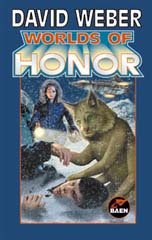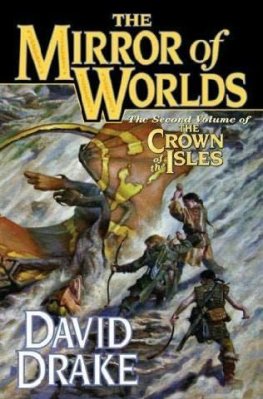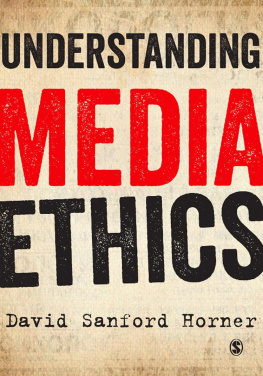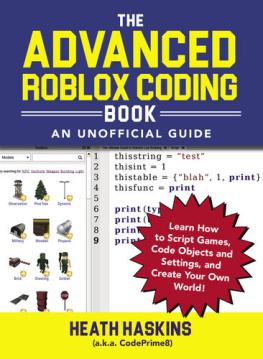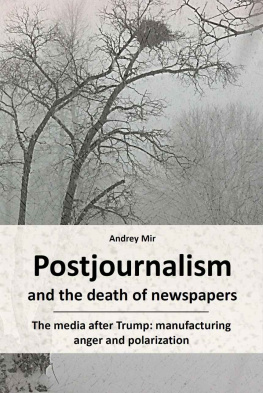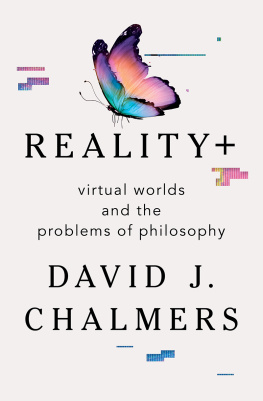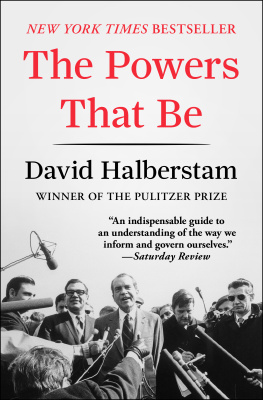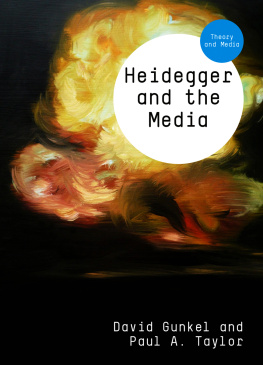ABOUT THE AUTHORS
David L. Altheide is a Regents Professor at Arizona State University (School of Justice Studies), where he has taught since receiving his Ph.D. in Sociology from the University of California, San Diego. A specialist in mass communication and qualitative research methods, his work has received national and international acclaim. Creating Reality: How TV New Distorts Events, was the first work by a non-Italian to receive the Premio Diego Fabbri Award. Media Power, another book, received the 1986 Charles Horton Cooley Award from the Society for the Study of Symbolic Interaction. He was selected as Arizona State Universitys Graduate College Distinguished Researcher for 199091.
Robert P. Snow is Professor of Sociology at Arizona State University in Tempe. He received his Ph.D. at the University of Minnesota and has been affiliated with the State University of New York at Buffalo.
First published 1991 by Transaction Publishers
Published 2017 by Routledge
2 Park Square, Milton Park, Abingdon, Oxon OX14 4RN
711 Third Avenue, New York, NY 10017, USA
Routledge is an imprint of the Taylor & Francis Group, an informa business
Copyright 1991 by Taylor & Francis
All rights reserved. No part of this book may be reprinted or reproduced or utilised in any form or by any electronic, mechanical, or other means, now known or hereafter invented, including photocopying and recording, or in any information storage or retrieval system, without permission in writing from the publishers.
Notice:
Product or corporate names may be trademarks or registered trademarks, and are used only for identification and explanation without intent to infringe.
Library of Congress Cataloging-in-Publication Data
Altheide, David L.
Media worlds : in the postjournalism era / David L. Altheide and Robert P. Snow.
p. cm.(Communication and social order)
Includes bibliographical references and index.
ISBN 0-202-30376-4 (cloth). ISBN: 0-202-30377-2 (paper).
1. Mass media. I. Snow, Robert P. II. Title. III. Series.
P90.A7285 1991
302.23dc20
90-48033
CIP
ISBN 13: 978-0-202-30376-5 (hbk)
For Carla, Suzanne and our television-age kids.
Today all social institutions are media institutions. As more experiences are influenced by media logic and discourse, our worlds are totally media. The nature and impact of total media on social life are our topic. We are concerned with the impact of media perspectives on other domains of social life. Media logic consists of a form of communication, the process through which media present and transmit information. Elements of this form include the various media and the formats used by these media. Format consists, in part, of how material is organized, the style in which it is presented, the focus or emphasis on particular characteristics of behavior, and the grammar of media communication. Our focus is on the process and impact of this logic on other domains of social life. Our thesis is quite clear: Social order is increasingly a mediated order, and any serious attempt to understand contemporary life cannot avoid this fact and its implications.
Our approach represents another generation of media studies. McQuails (1983:176ff) insightful demarcation of phases of media effects lists the following approximate dates and focus:
Phase 1. (1900 to late 1930s) The emphasis was on the nature and impact of the mass media to shape public opinion.
Phase 2. (1930s to 1960s) Attention turned to the role of film and other media for active persuasion or information, including some of the unintended consequences of media messages (cf. Rosengren 1983).
Phase 3. (1960s to 1980s) Interest was in studies of media effects, but with a shift toward long-term social change, beliefs, ideologies, cultural patterns, and even institutional forms. (Note: This was the period for the rise of cultural studies approaches (Williams 1982), interest in structural and rhetorical uses of the mass media, and also a renewed interest in semiotics, deconstruction, and critical literary criticism.)
With the exception of a few works represented in Phase 3, the overwhelming majority of significant works examined media as content, and tended to focus on individual effects, e.g., voting behavior, violence, prejudice, and susceptibility to messages. It was really in the latter part of Phase 3 that attention began to shift to cultural and especially institutional analyses, but even hereincluding some of our previous workthe focus was on content, ideology, and how messages can be biased. We add Phase 4.
Phase 4. (1990 to the present) The contemporary focus in on cultural logics, social institutions, and public discourse (cf. Ferrarotti 1988; Gronbeck 1988). This phase focuses on media and modes of representations as significant features of social life. Drawing on a breadth of theory and research, the latest phase of mass communication studies assumes that since all messages are constructed, there will be different interests represented in the content, including those made by social scientists about the biases of others! It is axiomatic that all statements contain and reflect some features of the cultural and ideological context and perspective in which they are offered. Although such pronouncements are useful to inform the lay public about, say, news programs, our understanding of media effects is hardly enhanced by spinning our conceptual wheels on such forms of bias. The reason, of course, is that the problem is not solved by merely altering the content or by having one news source replace another one. Rather, what is needed to move ahead in Phase 4 is a fresh approach to the nature of communication basics, especially cultural forms.
During this latest phase of media analysis, attention shifts decidedly away from the content of communication to the forms, formats and logic of order. Formats of communication and control are central elements of this phase; communication modes are no longer regarded merely as resources used by powerful elements, but rather communication formats become topics in their own right, significant for shaping the rhetoric, frames, and formats of all content, including power, ideology, and influence. In this period, significant social analysis is inseparable from media analysis. Here the key concept is reflexivity, or how the technology and logic of communication forms shape the content, and how social institutions that are not thought of as media arenassuch as religion, sports, politics, the familyadopt the logic of media and are thereby transformed into second order media institutions. We are in this phase now. Media Worlds in the Postjournalism Era is one attempt to describe the communicative features of our situation.
In a media world, organized journalism is dead; we are postjournalists for two general reasons. First, journalistic practices, techniques, and approaches are now geared to media formats rather than merely directing their craft at topics; second, the topics, organizations, and issues that journalists report about are themselves products of mediajournalistic formats and criteria. In a sense, it is as though journalists, and especially TV journalists, are reporting on another entity down the hall from the newsroom. Public life subscribes to the media logics and formats that have been spawned in our age of electronic information; the politicians and others who are covered use the same criteria the journalists do, and often more skillfully! These are worlds of media, built from standard communication procedures and formats borrowed from the journalistic enterprise. Journalism will not be reborn until information formats are recognized, evaluated, and altered with journalistic criteria in mind, rather than organizational and nonsubstantive mandates.



